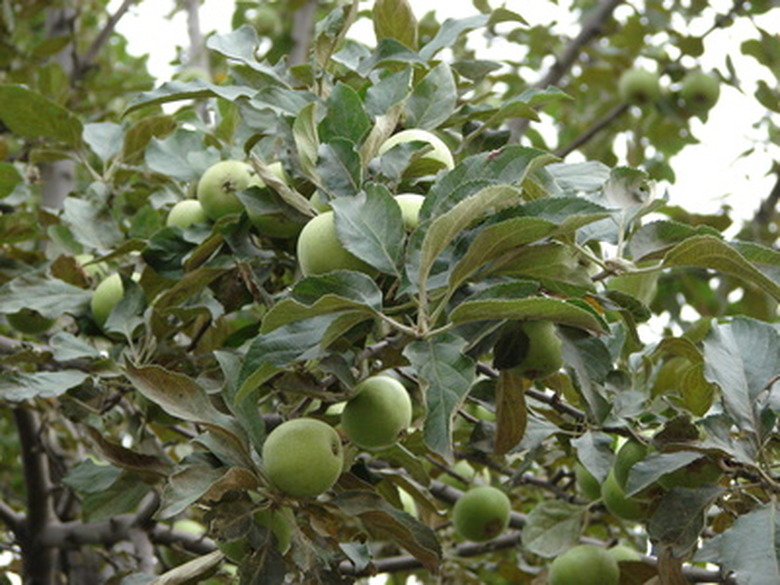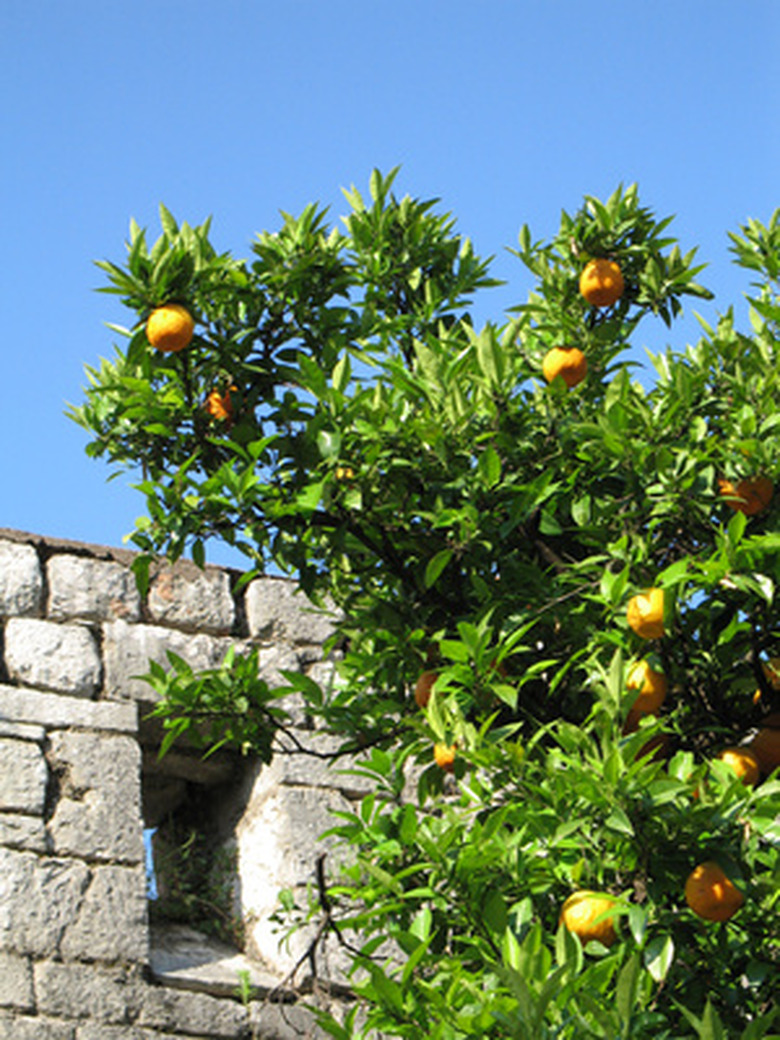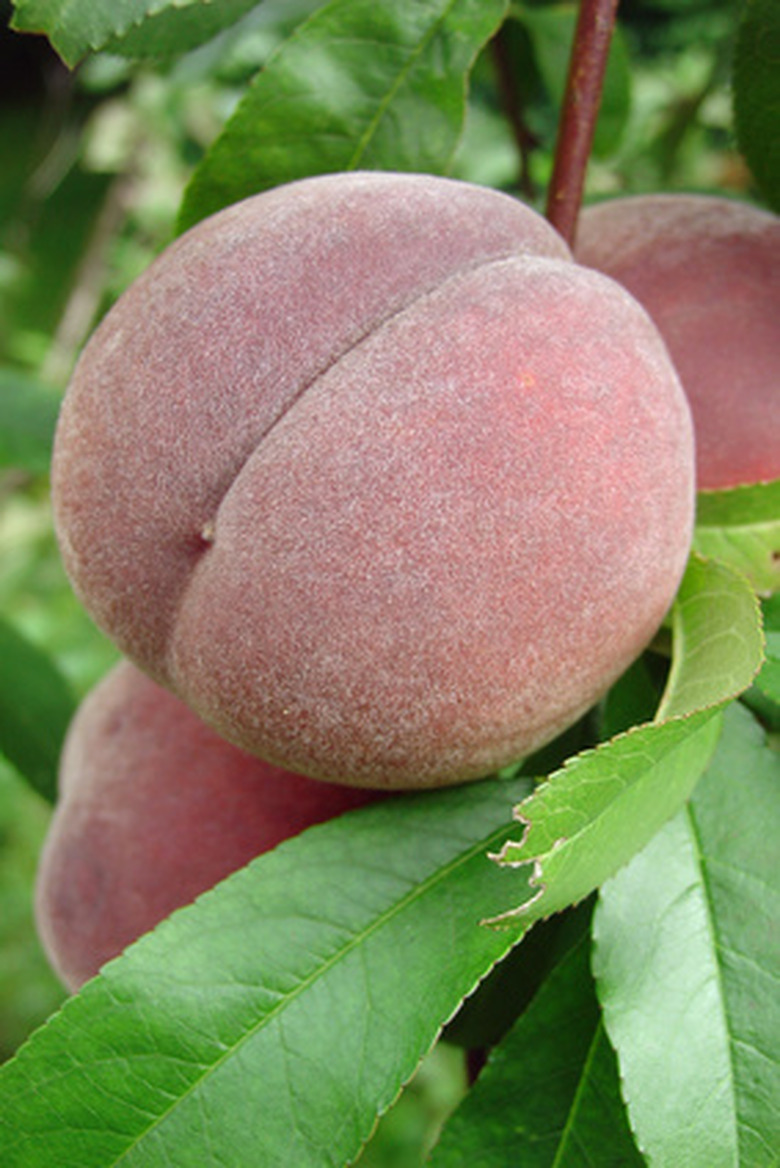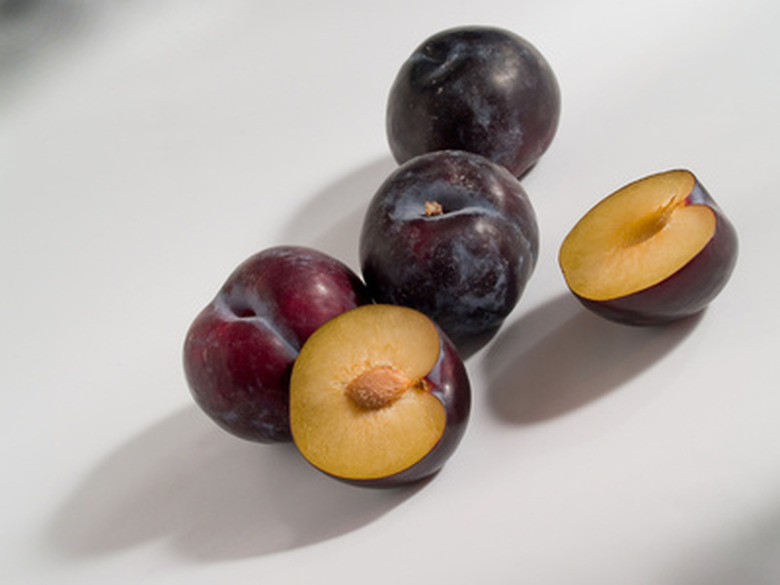How To Tell What Fruit I Have On My Tree
Identifying fruit when it's on the tree can be done with four out of your five, informed senses of touch, smell, sight, and taste. Fruits may not look exactly like they do in the supermarket when they're hanging on the tree, but it can be done.
Identifying fruit when it's on the tree can be done with four out of your five, informed senses of touch, smell, sight, and taste. Fruits may not look exactly like they do in the supermarket when they're hanging on the tree, but it can be done. Most tree fruits can be divided into three categories: pome fruits, stone fruits and citrus fruits. Learn the characteristics of these three types and you'll be well on the way to identifying the fruit on your trees.
Step 1
Keep an eye on the fruit as it develops. Most will start out small and green, changing color as they grow. For example, lemons and grapefruit will turn yellow, while lime and avocados remain green. Crabapples will stay small, while other varieties of apple become large and red, green or yellow.
- Identifying fruit when it's on the tree can be done with four out of your five, informed senses of touch, smell, sight, and taste.
- Crabapples will stay small, while other varieties of apple become large and red, green or yellow.
Step 2
Feel the skin of the fruit. Apples, plums, tangerines and pears have thin skins that can be nicked with a fingernail. Peaches and apricots tend to feel fuzzy. Citrus fruits like lemon, lime and grapefruit have thick rinds that ooze oils when pressed.
Step 3
Cut the fruit through its middle with a sharp knife. Stone fruits like avocado, plum, cherry and peach have a single seed, or pit, at their center. Citrus fruits like lemon, orange and lime have sections that can be peeled apart. Each section has seeds in the middle. Pome fruits like apples and pears have seeds in a core at the center, surrounded by flesh..
- Feel the skin of the fruit.
- Apples, plums, tangerines and pears have thin skins that can be nicked with a fingernail.
Step 4
Taste and smell the fruit. Citrus has a tangy, acid or sour taste and smell. Pome fruits are smooth-textured, though they can be sour or sweet. Stone fruits are sweet and juicy, with the possible exception of sour cherries, which can be quite tart.
Step 5
Determine the exact variety of fruit by matching the fruit's characteristics to descriptions in a field guide for fruit identification. Apples for example, come in so many different varieties that you may need a book to help determine whether it's a Jonagold, Granny Smith, McIntosh or Red Delicious.





